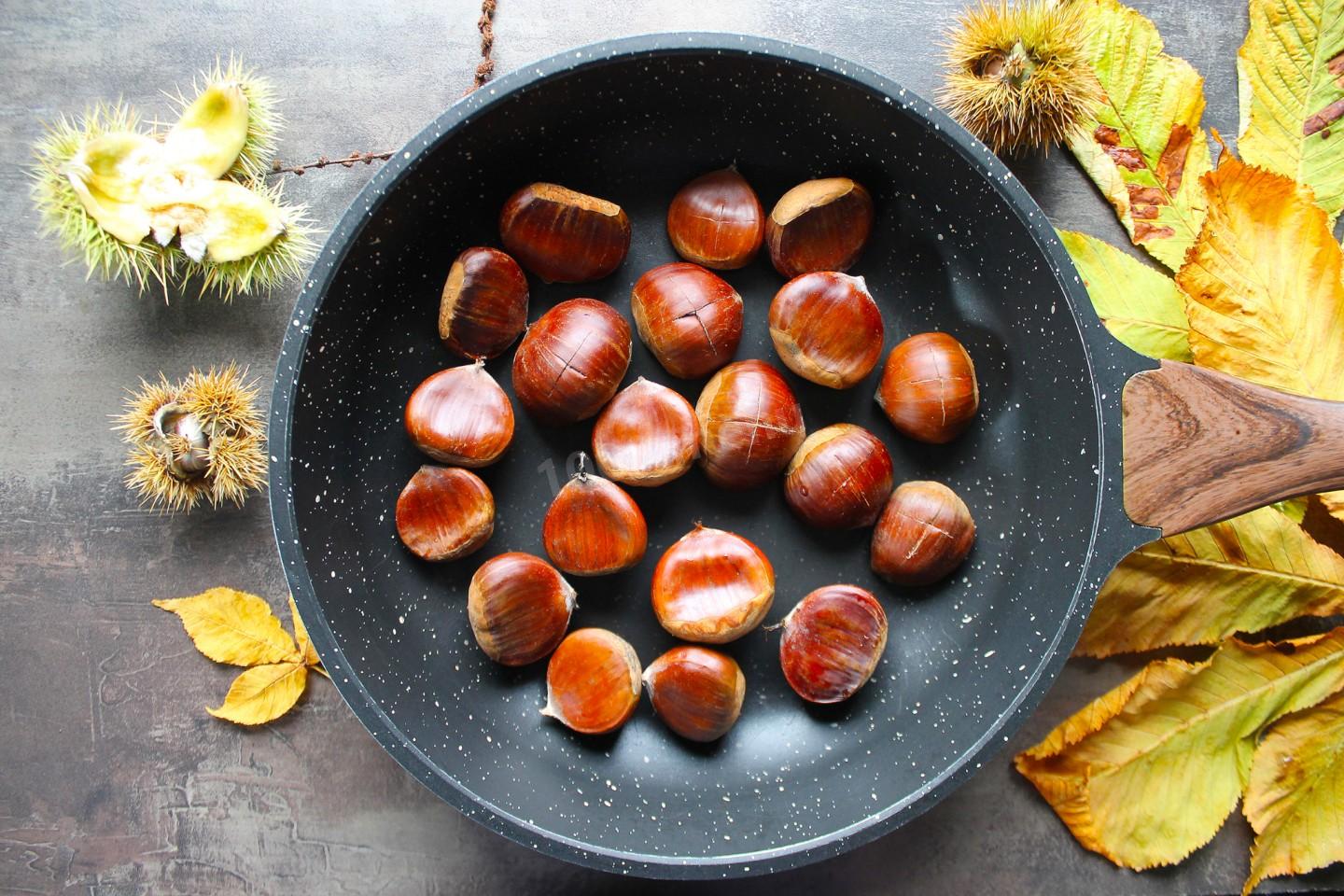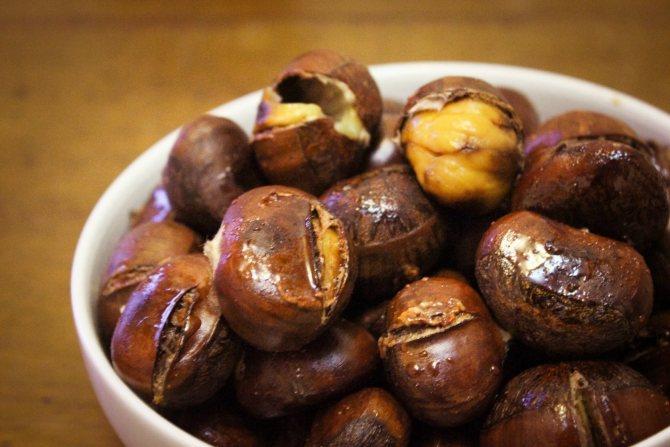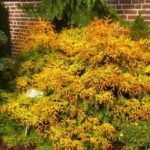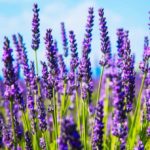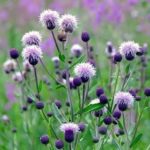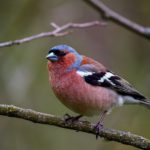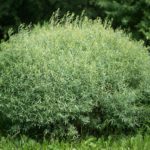Quite often, people ask whether they can eat chestnuts, and which fruits they should not eat. Edible and inedible fruits grow on trees that belong to different families. The first variety belongs to the Beech family, and the second - Sapindov. Visually, the plants are completely different, so they can be easily distinguished from each other.
What types can you eat?
Today there are several types of chestnuts that are acceptable to eat. The most famous varieties include the following:
- Crenate - it is also called Japanese.This crop is distinguished by the largest fruits. At the same time, trees grow up to 15 meters. The nuts reach a diameter of 6 centimeters and weigh 80 grams.
- Sowing - grows up to 35 meters. This plant is predominantly found in humid and warm climates. It predominates in the subtropics. Its propagation is carried out by seed. The culture has powerful roots that perfectly hold the crown.
- American - also called jagged. This crop is considered very frost-resistant. It can withstand prolonged temperature drops down to -35 degrees.
- Chinese – also called the softest. The fruits of this chestnut have excellent taste, which is why they are often used in cooking. The wood of this plant is also prized. It is important to take into account that the crop does not tolerate drought well and needs frequent watering.
- Low-growing - height does not exceed 15 meters. However, it is considered decorative.
- Australian - is an evergreen crop that can reach 15-30 meters.
- Segu - this plant is resistant to pathogenic fungi that often affect chestnut trees.
- Henry - became widespread in the center and west of China. This tree can reach 25-30 meters.
By the time they ripen, edible chestnuts contain a maximum of valuable elements. After the peel of the fruits turns brown, they can begin to be collected and stored for the winter. Chestnuts can be consumed either prepared or raw.
As for caloric content, 100 grams of fried fruits contain 182 kilocalories. Raw nuts contain 166 kilocalories, and boiled ones - 131. Steamed chestnuts are considered the lowest in calories. 100 grams of fruit contain 56 kilocalories. Dishes made from chestnuts can be served as an appetizer, side dish or main dish. Today there are many recipes based on this product. All of them are accessible and simple.
Systematic consumption of chestnuts saturates the body with valuable substances. They are rich in vitamins and contain a lot of fiber. However, it is important to consider that this product can bring not only benefits, but also harm. This is usually observed with uncontrolled consumption of fruits. You are allowed to eat a maximum of 40 grams of product per day.
Which ones are not allowed?
Horse varieties are widespread in parks and squares. This tree has many types and varieties. However, its fruits are strictly prohibited from consumption. The most common types of this culture include the following:
- Californian - resembles a small tree up to 10 meters in size. This culture has white-pink flowers that form inflorescences measuring 20 centimeters in size. They have a very pleasant aroma.
- Yellow – this crop can reach 30 meters. It has a rather dense pyramidal crown. The tree is characterized by wedge-shaped, jagged leaves that have a yellow tint underneath. The crop blooms later compared to other varieties. This variety is considered the most frost-resistant.
- Pavia is an ornamental shrub that grows up to 3-6 meters.It can also be a tree that reaches 12 meters. The culture is distinguished by bright red flowers and not too prickly fruits.
- Small-flowered is a shrub whose height does not exceed 5 meters. The plant forms dense thickets. Its distinctive feature is white flowers with pink stamens.
- Naked - reaches 25 meters. This tree is characterized by an attractive crown. It also has decorative foliage and fruits.
- Japanese - a characteristic feature of the culture is the pear-shaped shape of the fruit. This type of chestnut has white and pink flowers.
- Meat red - has round fruits that are not too prickly. The plant is distinguished by red or pink flowers and bright green leaves. The culture is characterized by sensitivity to heat and dry weather.
- Indian - this plant reaches 20 meters. This culture comes from Northern India. It is characterized by white flowers covered with yellow and red spots. They form large inflorescences. The plant also has fleshy and prickly fruits.
Horse chestnut fruits are forbidden to eat. They are poisonous and have a bitter taste. In addition, the fruits do not contain protein, and they have low nutritional value. This product is used exclusively in medicine. Various drugs are prepared from it.
How to identify edible chestnuts
Edible chestnuts require a warm, humid climate. Moreover, equine species can grow in any conditions. They are often planted in squares and parks. Eating horse chestnuts is prohibited, as this can cause dangerous consequences. Therefore, it is important to be able to distinguish edible varieties from inedible ones.
By height
Edible plants are taller than horse varieties.This tree reaches 35 meters - it all depends on the variety. Trees of different types are distinguished by a beautiful and spreading crown.
Wild chestnuts usually grow to a maximum of 15 meters. However, sometimes their height can be 25 meters. In addition, horse chestnuts can grow in the form of bushes measuring 1.5-3 meters. These crops are also distinguished by their decorative and dense crown.
By foliage
Horse chestnut is characterized by palmate foliage that forms beautiful fans on large petioles. The leaves grow up to 10-20 centimeters in length. Edible varieties are characterized by ordinary oval leaves on small petioles, which are located alternately on the branches. The length of the plates reaches 22 centimeters, and the width – 7.
Features of flowering
Horse chestnuts bloom in May and June. During this period, pyramidal brushes form on the trees. The flowers resemble bells and reach 2 centimeters in diameter. Edible varieties begin to bloom in June-July. Moreover, their inflorescences resemble thin spikelets up to 15 centimeters in size.
By fruit size
An important difference is the appearance of the core. Edible chestnuts are smaller than horse chestnuts. At the same time, inedible fruits are characterized by the presence of a minimum of spines, which are easily removed. Edible nuts have many spines, making them difficult to peel.
Growth range of edible species
Edible varieties are considered more demanding in terms of growing conditions. They need a warm and humid climate. In addition, these trees require slightly acidic and well-moistened soil.They are most often found in the Mediterranean, USA, Asia Minor and southeastern Europe. The most suitable areas in terms of climate include France, Italy and Spain.
When do chestnuts ripen?
It is also possible to distinguish different types of chestnuts by their ripening time. The fruits of edible varieties ripen from September to November. Fresh fruits are considered very demanding in terms of storage conditions. If they are violated, mold quickly appears on the nuts.
Trees that produce edible fruit begin to bear fruit when they are 15 years old. From this moment on, they bear fruit very abundantly. In this case, the nuts fall off within 2 weeks. As a rule, long poles are used to collect them. First, the area is cleaned of leaves and other contaminants. Large nuts are mainly eaten.
Horse chestnuts are characterized by an early ripening period, which occurs in August-September. In spring, the trees are abundantly covered with fruits, but not all of them ripen. Therefore, some of the nuts fall off in the summer. By the end of September, only large and ripe fruits remain on the trees. Inedible varieties are often used in folk recipes. They are used for various ointments, decoctions and tinctures.
Chestnuts are divided into edible and inedible. That is why it is so important to be able to distinguish between these fruits. This can be done based on a number of characteristics - flowering, tree height, fruit size. There are also some differences in the ripening periods of the nuts.


